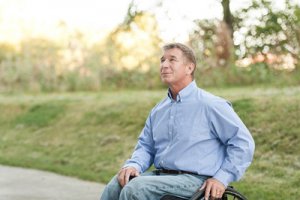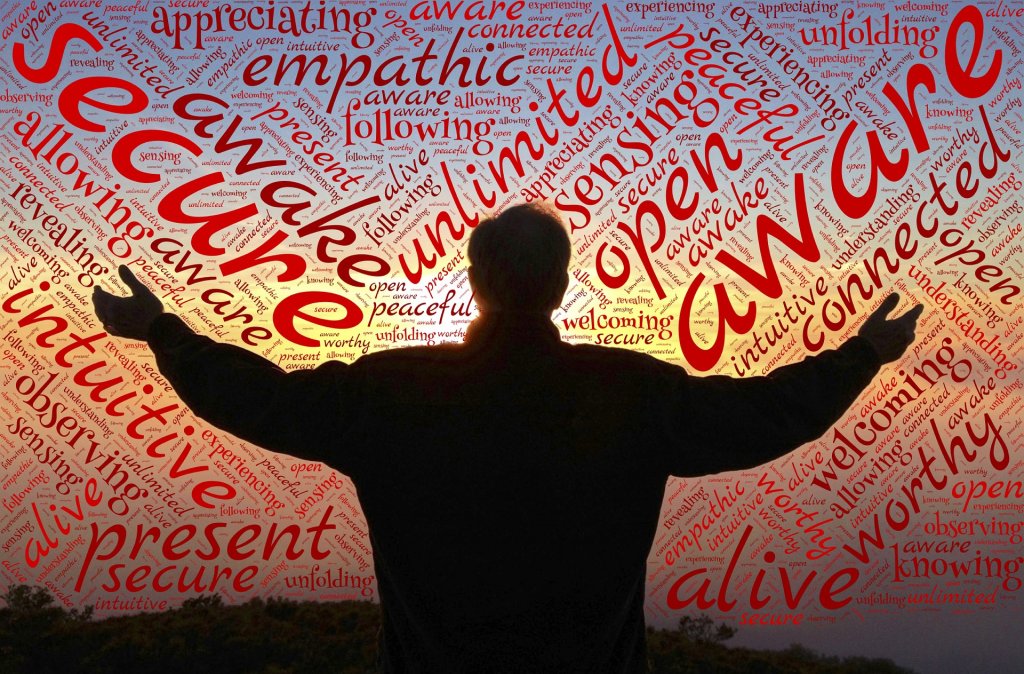Rick Hansen Foundation: Supporting Persons with Hearing Loss
Issues in Accessibility
Janine Verge, AuD, Aud (C) is coordinating the “Issues in Accessibility,” column which will cover topics addressing issues in accessibility for people who are Deaf/deaf and hard of hearing.
 When many people think of the Rick Hansen Foundation, they think of wheelchair users or mobility disabilities—but the Foundation is just as dedicated to people who are affected by other physical disabilities including vision and hearing loss. In fact, while Rick is best known for his epic wheelchair marathon around the world, he has also experienced hearing loss since 2008 and considers himself hard of hearing in his left ear.
When many people think of the Rick Hansen Foundation, they think of wheelchair users or mobility disabilities—but the Foundation is just as dedicated to people who are affected by other physical disabilities including vision and hearing loss. In fact, while Rick is best known for his epic wheelchair marathon around the world, he has also experienced hearing loss since 2008 and considers himself hard of hearing in his left ear.
For the last 30 years, Rick and the Rick Hansen Foundation have been working hard to create awareness and deliver innovative solutions to remove barriers and liberate the potential of people with disabilities. So how does RHF support people who are Deaf or hard of hearing? The same way we support all people with physical disabilities.
Removing Barriers
One of the biggest barriers people with disabilities still face today is the built environment—the places we enter and interact with, whether at work, school, running errands, or out with friends. RHF is working to remove these barriers so daily activities are more accessible for all people, including persons with hearing loss.
To help overcome this barrier, RHF developed Rick Hansen Foundation Accessibility Certification TM (RHFAC): a national rating system developed for the industry that measures and promotes accessibility in Canada's built environment. RHFAC is a consistent methodology that takes hearing, vision, and mobility challenges into account when looking at the accessibility of space. While building code helps ensure many accessibility needs are met, unfortunately, this isn't always the case, particularly when it comes to hearing loss.
“I look at this quite seriously because I’m a person with a hearing disability, and so everywhere I go I notice places that are really exceptional for hearing and some that are really terrible,” says RHFAC Professional Hans Uli Egger. Egger is an RHFAC Professional who provides organizations with an RHFAC rating and insight into what they’re doing well and where they can improve.
“People always think about mobility disabilities,” says Egger, “But RHFAC looks at vision, hearing, and mobility.”
How Does RHFAC Rate the Built Environment for Hearing Disabilities?
“Acoustic Considerations” is a section in the rating survey where RHFAC Professionals pay close attention to those who are Deaf or hard of hearing. It helps ensure all users of the space, including those using hearing aids, can clearly hear with minimal interference from background noise. For example, if Egger is rating a site and there is a lot of noise or echo and reverberation, he makes note of it and scores accordingly. Features of a building that fall into this category are speakers and voice paging systems, and double-glazed windows.
Egger explained that the RHFAC rating will also take pathways into account for those with hearing loss, ensuring that if two people are engrossed in a conversation using ASL, they won't accidentally trip over an unexpected obstacle.
Hearing adaptive and assisted technologies such as hearing loops, infrared technologies, captioning, FM system, sign language interpreters, and ceiling sound baffles (sound-absorbing ceiling tiles) are also considered in the RHFAC rating system.
Educating the Next Generation
Rick is passionate about young people’s ability to change the world, a belief that created the Rick Hansen Foundation School Program (RHFSP). When youth are empowered to act on issues that matter to them, they inspire others along the way—creating the next generation of accessibility champions.
RHFSP provides free resources to educators across the country to support them in teaching about accessibility and inclusion. The different lessons and activities align with provincial curricula and promote compassion and leadership among elementary and secondary-aged students. Many of the lessons provide an opportunity to discuss what makes each of us different, focusing on ability rather than disability.
RHFSP also offers a “Teaching Strategies for the Inclusive Classroom” toolkit for educators. This resource provides tips for inclusive teaching for Deaf and hard of hearing students. These strategies include providing optimal lighting to ensure faces are clearly seen, supporting verbal instructions with visual aids, summarizing discussions on the board, providing assistive devices, and ensuring the student’s abilities are normalized and accepted.
Creating Awareness
Imagine walking down the sidewalk and passing a digital poster at a bus stop. Suddenly, the poster’s text adjusts to your head height. It then offers you a chance to increase the volume of the speakers and the size of the text. You notice there’s braille on the sign, and when you walk away it changes to French when it picks up the Francophone conversation of a couple who just arrived at the bus stop.
This is The Poster for Everyone. As part of RHF’s latest awareness campaign #EveryoneEverywhere, the Foundation created an innovative poster that shares a vision with the world where all people have equal access to the same things.
By generating awareness and creating a deeper understanding of different physical abilities we can build a more inclusive society. There are still many misconceptions when it comes to hearing loss, and for many, it is simply not top-of-mind. But when there is a general awareness around it, there is greater compassion and motivation to improve.
This is what #EveryoneEverywhere stands for ensuring everyone, regardless of ability, can access the places where we live, work, learn, and play. The TV Public Service Announcement features people with varying disabilities (everyone) in different places (everywhere). It’s a powerful reminder that we all have different needs, and we all deserve equal access.
Awareness for All Levels of Ability
Awareness is extremely important when it comes to inclusivity for people with hearing loss because it is often not noticeable right away. For BC native Lyette Sanderson, life is a lot easier when people know she is hard of hearing. "A lot of times people think I'm being rude and ignoring them when I don't quite catch what they're saying." She might hear something, but not realize that it's directed at her.
She notes that alongside rudeness if people don't consider the fact that she has hearing loss, they may also think that she isn't smart. Sanderson has difficulty pronouncing some words because she has never heard them properly. While this is understood among her family and friends, it can have negative consequences in professional settings. “If you’re in a professional environment and you’re stumbling over a word, it doesn’t reflect well. But if people are aware and more accepting of it, then it does make a difference,” she says.

Having more awareness, Sanderson says, would help to make this as normalized as people wearing glasses for vision loss. This is why she’s a supporter of the #EveryoneEverywhere campaign. It shows that it’s important to have accessibility for all degrees of physical ability, from requiring the use of a wheelchair to only temporarily needing crutches, or from being completely deaf to having mild hearing loss—it benefits everybody.
"There's a preconceived notion of who accessibility helps, that it's just for people whose challenges are obvious. It's not just a handful of people, it's actually a bigger group than we even realize," says Sanderson.
In line with the disability community's motto "nothing about us without us" we also created the RHFAC Experts Taskforce to ensure RHFAC addresses the lived experience of persons with disabilities. Shane Silver of the Canadian Hard of Hearing Association is a member of the task force and has provided valuable feedback on behalf of the community.
Collaborating with the Community
Having a disability community work together is an important step towards creating change. This includes creating platforms and events that foster collaboration with various members of the community, including those focused on hearing loss. For the past five years, The Rick Hansen Foundation has hosted the Accessibility Leadership Forum, an event dedicated to collaborating on innovative solutions to removing barriers for people with disabilities.
Accessibility Professional Network Conference
RHF also recently launched the Accessibility Professional Network—a professional association aimed at bringing together those working in the accessibility field, while providing them with professional development resources. The first annual Accessibility Professional Network conference took place this Fall in Toronto. The conference brought together 181 delegates from across the country, all to advance Canada's accessibility.
National Executive Director of the Canadian Hard of Hearing Association and RHFAC Technical Subcommittee member Christopher T. Sutton was among the guest speakers. Sutton’s presentation discussed innovations in design and technology in the built environment for people with hearing disabilities to a full room of engaged participants.
"This conference embodied inclusive event best-practices throughout the two days," said one conference-goer, "Like providing information in advance on accessible transportation options to the location and physical access to the site; water bowls for service animals; a range of food options; Content provided in braille, captioning and ASL."
We’re Stronger Together
The Rick Hansen Foundation is grateful to be working every day toward positive change for Canadians who are Deaf and hard of hearing. We truly believe that society is much healthier, more productive, and happier when everyone has the chance to contribute and live life to their fullest capacity.
While many barriers persist, the future is looking more accessible for those with hearing loss. Milestones like the passing of the Accessible Canada Act provide encouragement, especially knowing the Canadian Accessibility Standards Development Organization was created—a group comprised mainly of persons with disabilities who will help guide the new legislation.
By removing barriers through certification, educating youth, creating awareness, and collaborating with leaders in the Deaf and hard of hearing community, we’re working toward a Canada that is accessible to everyone, everywhere.

